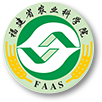Selenium Contents and Forms in Soils at Tea Plantations of Different Soil Types in Northern Fujian
-
摘要: 为探讨闽北典型茶园土壤中硒形态特征,采集了闽北地区4个主要土壤类型(黄壤、红壤、潮砂土、紫色土)的35份茶园表层土壤(0 ~ 20 cm),分析土壤中硒含量、赋存形态及影响因素。结果表明:闽北地区35份茶园土壤全硒含量为0.22 ~ 1.07 mg·kg-1,均值为0.59 mg·kg-1,达到富硒土壤标准(> 0.4 mg·kg-1)比例茶园占82.86%;土壤硒活化率均值为8.34%,土壤中硒的有效度较低。不同土壤类型中以黄壤茶园土壤全硒及各形态硒含量最高,潮砂土含量硒含量最低,但其茶园土壤硒活化率最高。茶园土壤硒形态分布规律表现为有机结合态>残渣态>可交换态及碳酸盐结合态>铁锰氧化物结合态>可溶态,土壤硒的生物有效性较低。相关分析表明,茶园土壤硒形态总体受土壤有机质、氮素形态及pH的影响,土壤有效磷与土壤全硒、有机结合态和残渣态硒之间呈显著或极显著正相关,土壤铁锰氧化物结合态硒与土壤理化性质之间相关性均不显著。总体而言,该区域茶园富硒土壤为发展天然富硒茶提供了物源保证,但硒生物有效性不高,如何提高硒生物有效性还有待进一步研究。Abstract: Distribution of available selenium (Se) in soils at tea plantations of different soil types in northern Fujian province was determined to analyze the factors that contributed to the variations. Thirty-five specimens of surface soil at the depth of 0-20 cm from tea plantations of yellow soil, red earth, moisture sandy soil, and purple soil types in the region were collected. The chemical analysis showed that the total Se contents of the soils ranged from 0.22 mg·kg-1 to 1.07 mg·kg-1 with an average of 0.59 mg·kg-1. A great majority of the area soil, i.e., 82.86%, belonged to the Se-rich classification. The availability of Se, however, was low, ranging from 1.10% to 31.64% with a mean of 8.34%. Among the different soil types, the yellow soil was the highest in contents of total and various forms of Se, while the sandy soil lowest but most available for plant utilization. The contents of various forms of Se were lower in the order of organic matter-bound Se > residual Se > exchangeable and carbonate-bound Se > iron and manganese oxides-bound Se > soluble Se. The chemical form was critically affected by the organic matters, pH, and nitrogen in the soil with significant positive correlations between available phosphate and total Se and between organic matter-bound Se and residual Se. On the other hand, there were no significant correlations between iron or manganese oxides-bound Se and soil physiochemical properties. In general, the soil in the region was rich in Se for tea cultivation, but the relatively low availability of the element deterred the potential benefit. Hence, improving Se bioavailability at the tea plantations would be a most desired task facing the scientists and industry.
-
Keywords:
- Tea plantation /
- soil types /
- selenium /
- selenium forms /
- affecting factors
-
-
[1] BEN A I, TROUDI A, GAROUI E, et al. Protective effects of selenium on methimazole nephrotoxicity in adult rats and their offspring[J]. Experimental Toxicologic Pathology, 2011, 63(6):553-561.
[2] JARZYNSKA G, FALANDYSZ J. Selenium and 17 other largely essential and toxic metals in muscle and organ meats of Red Deer (Cervus elaphus)-Consequences to human health[J]. Environment International, 2011, 37(5):882-888.
[3] RAYMAN M P. Selenium and human health[J]. The Lancet, 2012, 379(9822):1256-1268.
[4] 庞晓辰,王辉,吴泽嬴,等.硒对水稻镉毒性的影响及其机制的研究[J].农业环境科学学报, 2014, 33(9):1679-1685. [5] 吴永尧,彭振坤,陈建英,等.水稻对环境硒的富集和耐受力研究[J].微量元素与健康研究, 1999, 16(4):42-44. [6] 梁克红,卢林纲,朱宏,等.食物中硒的研究进展[J].中国粮油学报, 2018, 33(3):134-138. [7] 朱燕云,吴文良,赵桂慎,等.硒在动植物及微生物体中的转化规律研究进展[J].农业资源与环境学报, 2018, 35(3):189-198. [8] 张豪杰,郝心愿,周超,等.富硒区茶树鲜叶中硒累积与土壤因子的相关性分析[J].茶叶科学, 2020, 40(4):465-477. [9] 姚欢,宗良纲,孟蝶,等.增施磷肥对提高强酸性高硒茶园土壤硒有效性的效果[J].安全与环境学报, 2015, 15(4):288-293. [10] 秦玉燕,时鹏涛,王运儒,等.不同茶树品种硒、汞、砷富集特性研究[J].西南农业学报, 2017, 30(6):1396-1401. [11] 谢珊妮,宗良纲,张琪惠,等. 3种改良剂对强酸性高硒茶园土壤硒有效性调控效果与机理[J].茶叶科学, 2017, 37(3):299-307. [12] 瞿建国,徐伯兴,龚书椿.连续浸提技术测定土壤和沉积物中硒的形态[J].环境化学, 1997, 16(3):277-283. [13] 秦海波,朱建明,李社红,等.环境中硒形态分析方法及研究进展[J].矿物岩石地球化学通报, 2008, 27(2):180-187. [14] DINH Q T, WANG M, TRAN T, et al. Bioavailability of selenium in soil-plant system and a regulatory approach[J].Critical Reviews in Environmental Science Technology, 2019, 49(6):443-517.
[15] SHAHEEN S M, ALI R A, ABO W, et al. Assessing the mobilization of As, Cr, Mo, and Se in Egyptian lacustrine and calcareous soils using sequential extraction and biogeochemical microcosm techniques[J]. Journal of Geochemical Exploration, 2018, 191:28-42.
[16] LIU Y L, TIAN X L, LIU R, et al. Key driving factors of seleniumenriched soil in the low-Se geological belt:A case study in red beds of sichuan basin, China-ScienceDirect[J]. Catena, 2021, 196(24):104926.
[17] 迟凤琴,徐强,匡恩俊,等.黑龙江省土壤硒分布及其影响因素研究[J].土壤学报, 2016, 53(5):1262-1274. [18] 张青,王煌平,孔庆波,等.干湿交替灌溉对富硒土壤硒形态及水稻硒积累的影响[J].水土保持学报, 2018, 32(1):327-331, 338. [19] 周超,胡玉荣,曾建明,等.土壤因子对茶树硒吸收特性的影响[J].茶叶科学, 2015, 35(5):429-436. [20] 余文权,王峰,陈玉真,等.福建省典型茶园土壤硒含量及其影响因素研究[J].茶叶科学, 2020, 40(2):173-185. [21] 王峰,陈玉真,单睿阳,等.大田县茶园土壤和茶叶中硒含量及影响因素分析[J].茶叶学报, 2018, 59(3):126-130. [22] 瞿建国,徐伯兴.连续浸提技术测定土壤和沉积物中硒的形态[J].环境化学, 1997, 16(3):277-283. [23] 鲁如坤.土壤农业化学分析方法[M].北京:中国农业科技出版社, 2000. [24] 陈振金,陈春秀,刘用清,等.福建省土壤环境背景值研究[J].环境科学, 1992, 13(4):70-75. [25] 魏复盛,杨国治,蒋德珍,等.中国土壤元素背景值基本统计量及其特征[J].中国环境监测, 1984, 7(1):1-6. [26] 谭见安.中华人民共和国地方病与环境图集[M].北京:科学出版社, 1989. [27] JONES G D, DROZ B, GREVE P, et al. Selenium deficiency risk predicted to increase under future climate change[J]. Proceedings of the National Academy of Sciences, 2017, 114(11):2848-2853.
[28] 廖启林,崔晓丹,黄顺生,等.江苏富硒土壤元素地球化学特征及主要来源[J].中国地质, 2020, 47(6):1813-1825. [29] 王仁琪,张志敏,晁旭,等.陕西省安康市西部稻田土壤硒形态特征与水稻富硒状况研究[J].中国地质, 2022, 49(2):398-408. [30] 赵妍,宗良纲,曹丹,等.江苏省典型茶园土壤硒分布特性及其有效性研究[J].农业环境科学学报,2011, 30(12):2467-2474. [31] LIU N, WANG M, ZHOU F, et al. Selenium bioavailability in soilwheat system and its dominant influential factors:A field study in Shaanxi province, China[J]. Science of the Total Environment, 2021, 770(8):144664.
[32] 瞿建国,徐伯兴,龚书椿.上海不同地区土壤中硒的形态分布及其有效性研究[J].土壤学报, 1998, 35(3):398-403. [33] BUJDO M, MULOVA A, KUBOVA J, et al. Selenium fractionation and speciation in rocks, soils, waters and plants in polluted surface mine environment[J]. Environmental Geology, 2005, 47(3):353-360.
[34] 王松山,梁东丽,王丹,等.基于路径分析的土壤硒形态与土壤性质的关系[J].土壤学报, 2011, 48(4):823-830. [35] 朱建明,秦海波,李璐,等.湖北恩施渔塘坝高硒土壤中硒的结合态[J].环境科学学报, 2008, 28(4):772-777. [36] 郦逸根,徐静,李琰,等.浙江富硒土壤中硒赋存形态特征[J].物探与化探, 2007, 31(2):95-98. [37] QIN H B, ZHU J M, SU H.Selenium fractions in organic matterfrom Se-rich soils and weathered stone coal in selenosis areas of China[J]. Chemosphere, 2012, 86:626-633.
[38] DINH Q T, LI Z, TRAN T A T, et al. Role of organic acids on the bioavailability of selenium in soil:A review[J]. Chemosphere, 2017, 184:618-635.
[39] LI Z, LIANG D L, QIN P, et al. Interaction between selenium and soil organic matter and its impact on soil selenium bioavailability:A review[J]. Geoderma, 2017, 295:69-79.
[40] 迟凤琴,徐强,匡恩俊,等.黑龙江省土壤硒分布及其影响因素研究[J].土壤学报, 2016, 53(5):1262-1274. [41] HUANG C L, SONG M Y, WEI Y C. Study on selenium contents of typical selenium-rich soil in the middle area of Zhejiang and its influencing factors[J]. Environmental Science, 2013, 34(11):4405-4410.
[42] 许泉,芮雯奕,刘家龙,等.我国农田土壤碳氮耦合特征的区域差异[J].生态与农村环境学报, 2006, 22(3):57-60. [43] LI Z, MAN N, WANG S, et al. Selenite adsorption and desorption in main Chinese soils with their characteristics and physicochemical properties[J]. Journal of Soils and Sediments, 2015, 15(5):1150-1158.
[44] LEE S, DOOLITTLE J J, WOODARD H J. Selenite Adsorption and desorption in selected south Dakota soils as a function of pH and other oxyanions[J]. Soil Science, 2011, 176(2):73-79.
-
期刊类型引用(1)
1. 潘丽萍,江泽普,廖青,陈锦平,黄太庆,刘永贤,邢颖. 南方红壤区典型母质发育土壤硒素特征及影响因素. 土壤. 2024(03): 495-502 .  百度学术
百度学术
其他类型引用(0)
计量
- 文章访问数: 30
- HTML全文浏览量: 0
- PDF下载量: 2
- 被引次数: 1






 下载:
下载:
